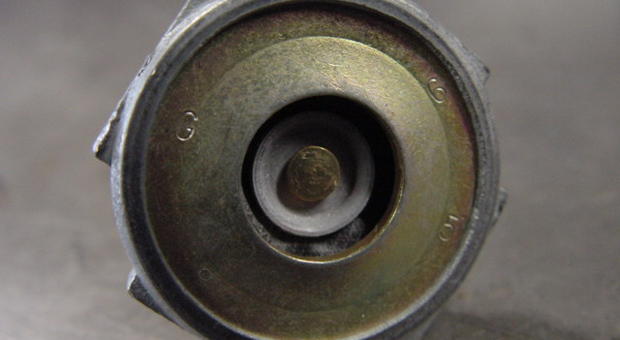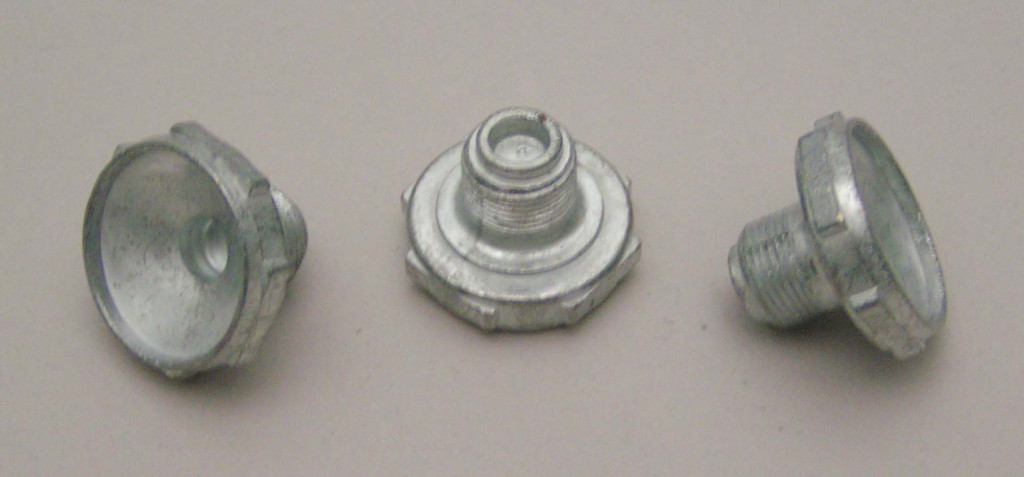

When it comes to tuning a Holley carburetor the power valve has always seemed a mystery to many. But, once you know how power-valves work, it’s easy to select, troubleshoot, and install the right one for your application.
The power is a vacuum-operated fuel valve that is designed to enrich the fuel flow to the engine under varied vacuum conditions. It is located in the metering block, and opens at a set vacuum that is determined by the spring it contains. Depending on the spring in the power valve, this can occur at varying engine rpm and directs extra fuel into the carburetor’s main power circuit. The valve itself is a small rubber diaphragm with a small coil spring. When opened, it allows fuel to flow through the calibrated opening in the metering block (power valve channel restrictor). This restrictor determines the amount of additional fuel delivered to the engine.

To find out which power valve your high-performance engine needs, you first need to know the vacuum characteristics of your engine. Begin by hooking a vacuum gauge to an intake manifold-vacuum port. Warm up the engine and note the vacuum reading at idle. Automatic transmission equipped vehicles need to be in the Drive position for this test. Once you have a proper reading, divide the vacuum reading number in half. The divided number will determine the correct power valve that you need.
As an example, a vacuum reading at idle of 13-inches needs to be divided by two, which results in a number of 6.5. Therefore, you should have a number 65 Holley power valve installed in the carburetor. If your divided number falls on an even number, you should select he next lowest power valve number. For example, a vacuum reading of 8-inches, divided by two and you come up with a number of four. In this case, you would use a 35 power valve.
To know which power valve you have, all you need to do is look at it. Each power valve is stamped with a number that indicates the correct vacuum opening point. For example, a power valve with the number 65 stamped on it will open at 6.5 inches of engine vacuum. Many racers will instinctively remove the power valve and install a plug in its place. This is often done on hardcore race cars that don’t see a lot of street duty. Basically, the power valve is designed to help an engine to deliver a little better gas mileage, and with a race car, fuel mileage is not typically a priority.
However, if you decide to remove the power valve, then bigger main jets must be installed. Since the power valve is for fuel enrichment, if it is missing, the engine needs to get the extra, required fuel from somewhere. So, If you decide to do away with the power valve, you must increase the main jet sizes considerably (typically 6 – 10 jet sizes).

Stock engines typically have a high vacuum reading (10-18 inches at idle) and the Holley power valves with higher readings like 6.5 to 10.5 will work correctly. But, add a long duration non-stock camshaft or other performance related parts, you will soon find out that a stock-rated power valve is not your friend. This is because engine manifold vacuum is usually lowered with these performance parts, and this can cause the power valve to always be open, even at part throttle, leading to an overly rich air/fuel mixture. Holley makes performance style “standard” flow or a high flow power valve, which has a larger opening. If at all possible, avoid any “two-stage” power valve. These are designed more for economy minded users rather than performance enthusiasts.
Finally, most of the popular Holley carburetors incorporate a power valve blow-out protection system. This is a special check valve that is located in the base plate, expressly for this purpose. This check valve is designed to be normally open but will quickly close off the internal vacuum passage when a backfire occurs. Once closed, the check valve interrupts the pressure wave caused by the backfire, thus protecting the power valve.
If you have a carburetor older than 1992 (or you have experienced an extreme backfire) and expect a blown power valve, use this simple test. TEST: At idle, turn your idle mixture screws (found on the side of the metering block) all the way in. If your engine dies the power valve is not blown.



Thanks Randy! Nice and simple, easy to understand.
My vacuum is pulling around 19. Idles great. When i throttle up hard it wants to die and looses vacuum, but if I idle up easy it will reach high rpm with no problem. Any help would be appreciated
I think that you have an accelerator pump cam (too wimpy) or discharge nozzle (too big) issue. You didn’t mention what size carb you have or what type. For a typical 750 cfm, I use white or pink accelerator cams and a 0.035″ discharge nozzle (extended leg nozzle tip type preferred). Also, check for excessive throttle linkage clearance at the accelerator pump lever. Check the primary bowl gasket for damage too. I saw one that was cut from overtightening the bowl screws that directed the accelerator pump shot right back into the bowl – causing a huge stumble. When lightly but quickly pushing the accelerator lever, you should see a little fuel come out of the discharge nozzle. Otherwise, you have a problem.
I have a ’65 Mustang with a Holley 570cfm Street Avenger, I have a lean backfire in colder weather and poor mileage, Could it be a combination of a power valve that opens too late (6.5) and an accelerator pump that is not aggressive enough?
Have you checked the ignition timing?
What happens if there is a 6.5 Power valve when the calculation calls for say 2.5. Does the PV open when the vacuum drops below 6.5. The car is a big block with a L88 camshaft.
It starts up fine, but when it is idling, it gradually reduces RPM to the point where it dies. Thanks
On an 850 4150 would it be the same PV for each meter?